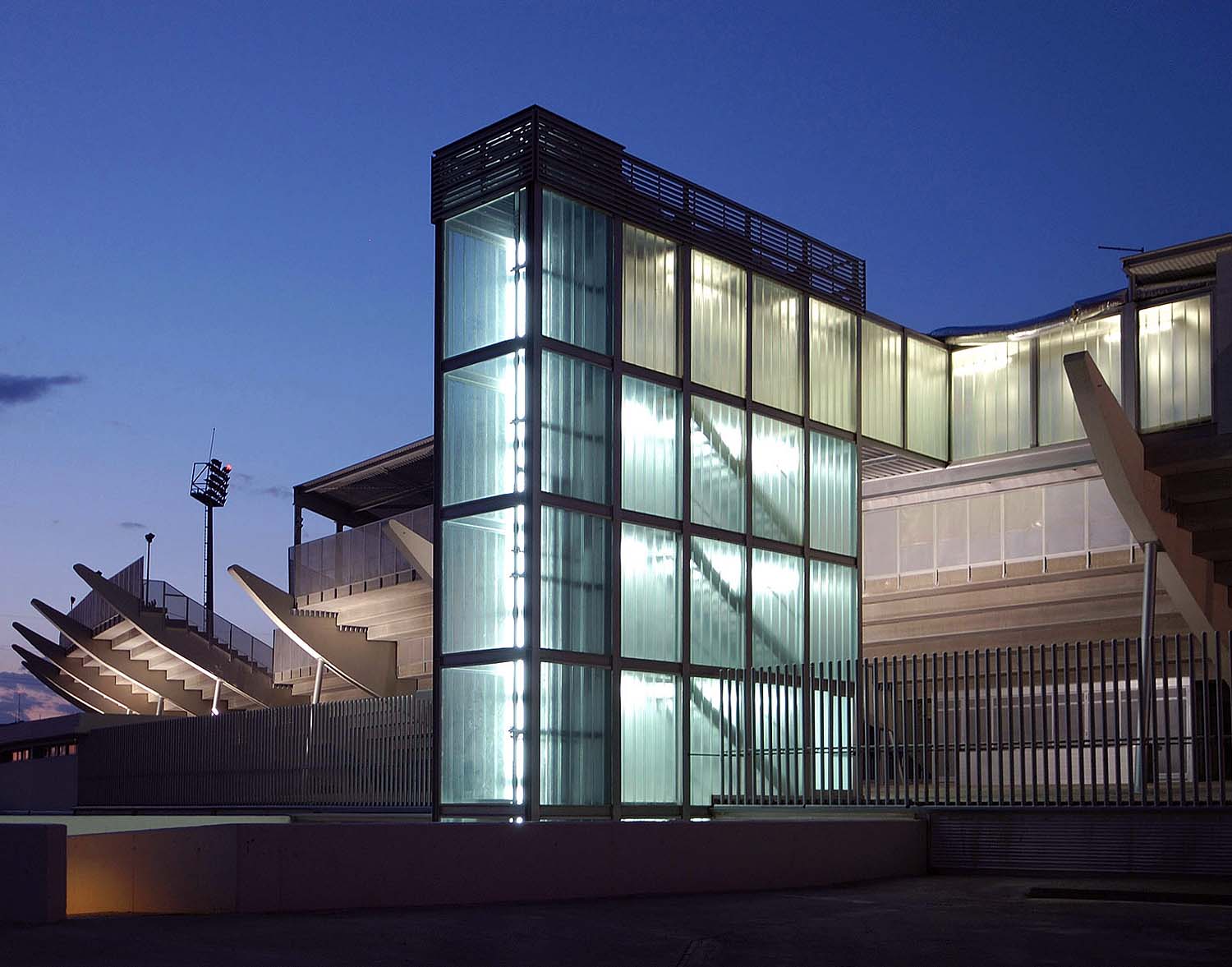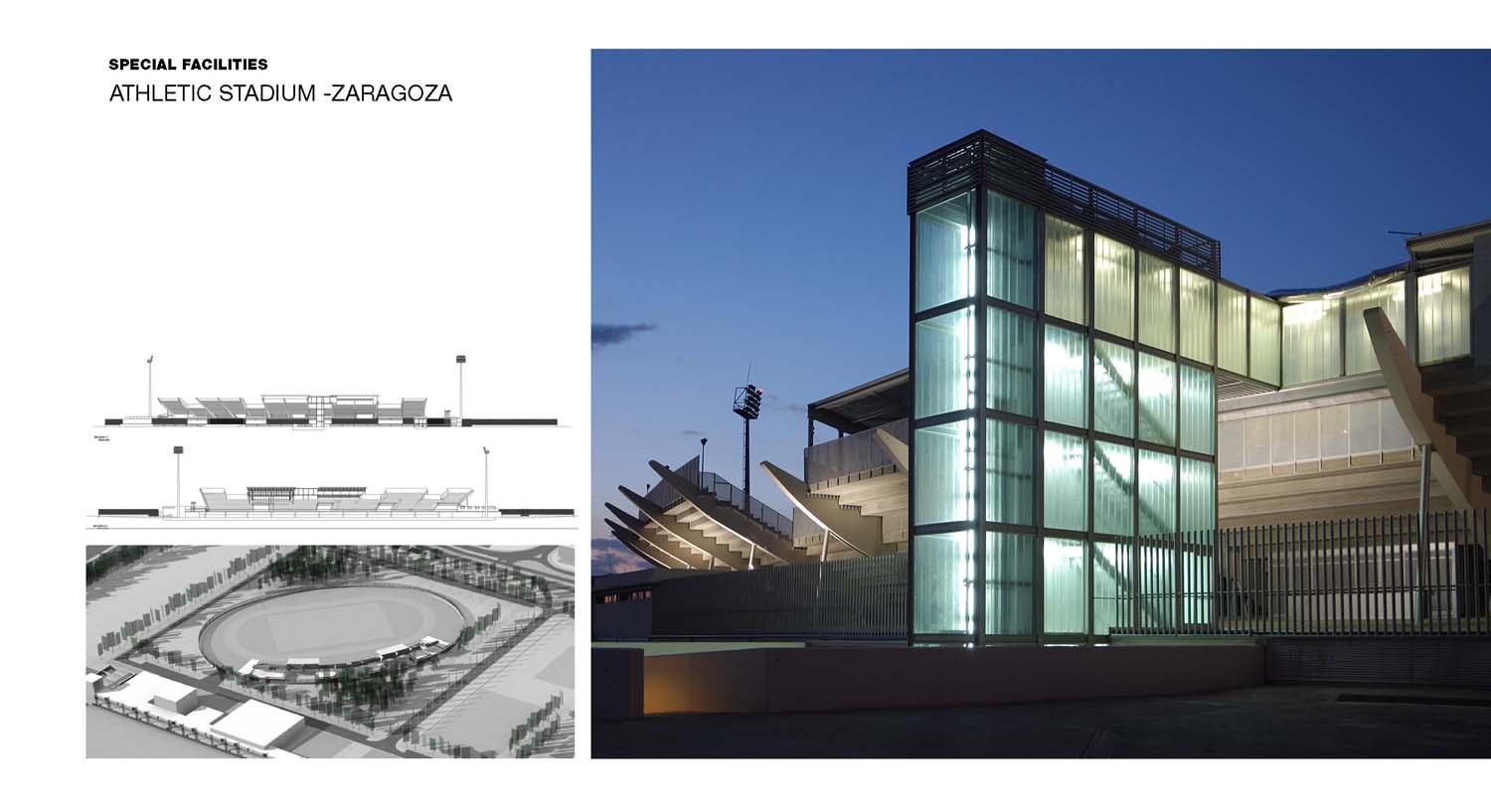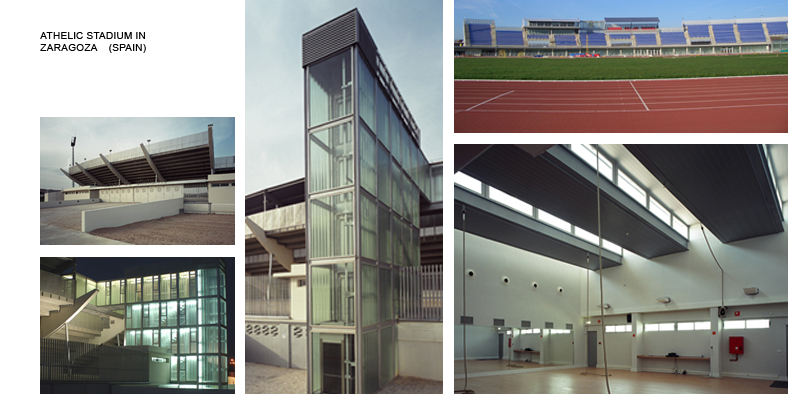
Construction project for a sports centre including an athletics track and multi-purpose hall
This project started with receiving the order to organize this area in the city of Zaragoza, at the edge of the Juslibol neighbourhood. The arrangement to install the Aragonese Centre for Sport was drawn up through a Special Plan, whose priority was to respect the environment and landscapes of the banks of the river Ebro. The land comprises an area of some 169,727 m2, of which 121,418 m2 were intended to be used for sports, to include 8,703 m2 for a multi-purpose pavilion and 24,091 m2 for an athletics stadium. These were to be located on the land adjacent to the current area being used for sports by the Spanish Football Federation.
Recommendations from the Sports Council and the results from experience with the construction of other sports venues were also incorporated. The whole project is designed to form an enclosed protected architectural whole, the first stage of what will be the future Aragonese Centre for Sport. Thus, the enclosure for the athletics stadium has been designed to fit architecturally with other sports facilities.
A 400-metre athletics track comprising eight lanes with bends and a straight was designed based on advice and technical criteria from the Aragonese Athletics Federation on the matter of orientation and most favourable standard dimensions. All matters related to changing rooms and services were also examined, not mention those related to the gyms and other services in the photo-finish area, the press area, lighting towers for the track and the grandstands.
The costs and maintenance of the athletics stadium were studied, so that the project could be implemented in several stages.
Creative
It was designed using a creative innovative method to reduce the impact that this type of construction could have on the landscape through the mechanism of the slight sinking of the athletics track, according to zero level access. On the one hand, this facilitated access to the public stands and, on the other, the best environmental conditioning on the landscape of the riverbank.

